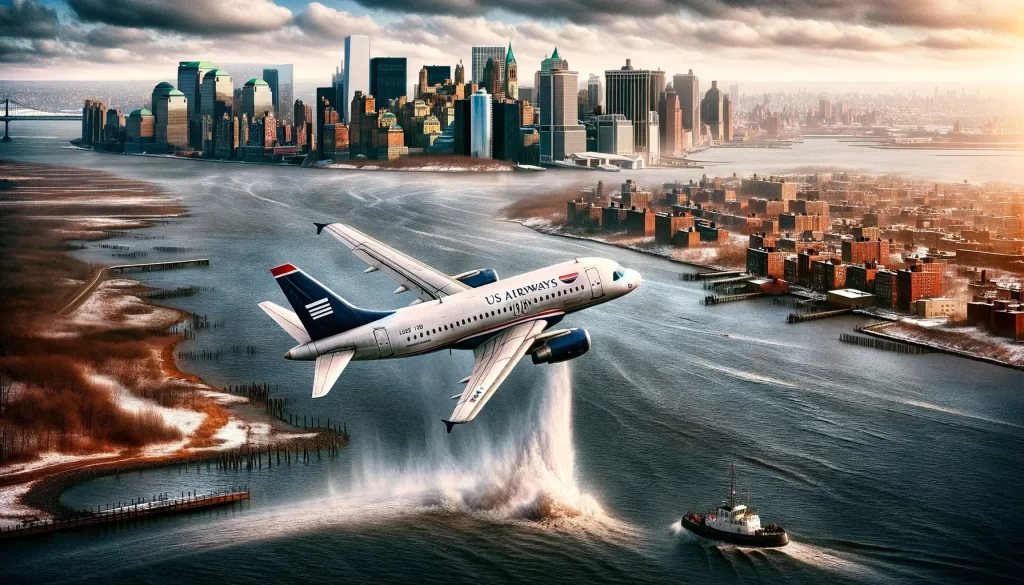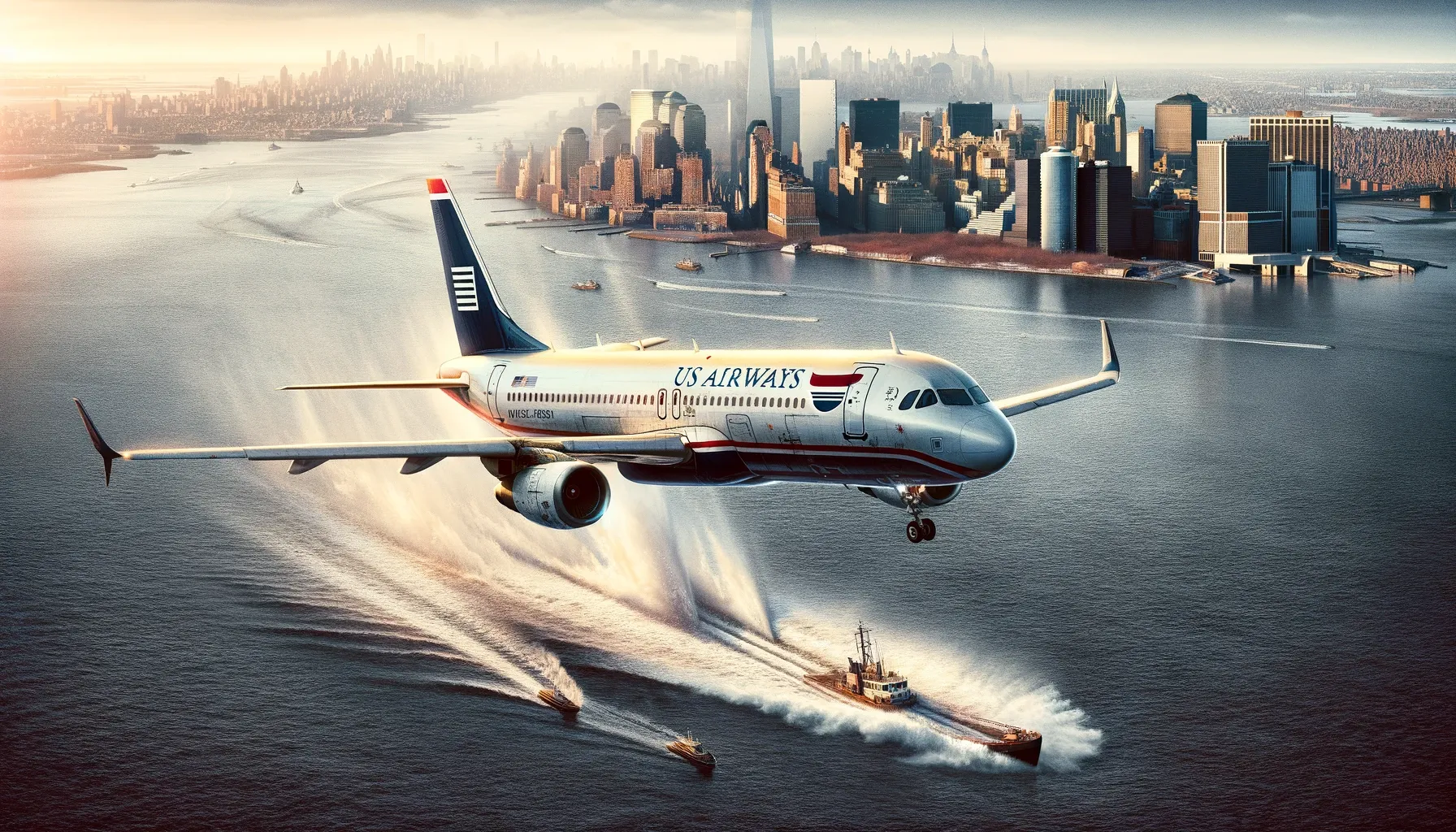Table of Contents
In this blog post, When Did Sully Land in the Hudson? we’ll walk through a complete timeline of the fateful chain of events that comprise the Miracle on the Hudson, pinpointing the precise moments when Sully was forced to glide the powerless plane to its river landing.
On January 15, 2009, US Airways Flight 1549 made an emergency landing in New York’s Hudson River in one of the most incredible events in aviation history. This incident became known as the “Miracle on the Hudson”, thanks to the piloting skills of Captain Chesley “Sully” Sullenberger. But when exactly did Sully manage to heroically ditch the commercial airliner in the Hudson after both engines failed?
The Lead-Up to US Airways Flight 1549
To set the stage, here are some key facts leading up to that January day:
- US Airways Flight 1549 was a scheduled commercial flight from New York City’s LaGuardia Airport to Charlotte, North Carolina.
- The aircraft was an Airbus A320-214 with tail number N106US and configured for single-aisle short and medium-haul flights.
- The flight crew consisted of Captain Chesley “Sully” Sullenberger and First Officer Jeffrey Skiles, both highly experienced US Airways pilots.
- On January 15th, weather conditions in New York were optimal with clear skies, light wind, and good visibility.
- There were 150 passengers booked along with 5 crew members, for 155 souls total aboard.
With ideal flying conditions on a routine winter weekday, nothing foreshadowed the challenges ahead as Flight 1549 prepared for departure.
Read also: Sully Sullenberger’s Net Worth

The Takeoff of Flight 1549
On January 15, 2009, Flight 1549 proceeded normally as it pushed back from Gate 18 at New York’s LaGuardia Airport.
The key timeline of events for takeoff and departure were:
- 3:19 PM – Flight 1549 pushes back for departure, with Captain Sully Sullenberger and First Officer Jeff Skiles at the controls.
- 3:24 PM – Flight 1549 takes off from New York’s LaGuardia Airport climbing westward, destined for Charlotte, North Carolina.
- 3:25 PM – The aircraft reaches an altitude of 2800 feet about two minutes after takeoff on a typical climb.
All was routine as Flight 1549 left LaGuardia’s runway and headed into the clear winter skies over New York. But only seconds later, the crisis would strike.
The Bird Strike and Engine Failure
At 3:25 PM, disaster struck as the airliner hit birds just after takeoff:
- 3:25 PM – Approximately two minutes into the flight, Flight 1549 flies through a flock of Canada geese at 2800 feet.
- 3:27 PM – The bird strike results in immediate loss of thrust from both engines as they ingest the geese.
- 3:28 PM – With no engine power, Sully quickly analyzes options and decides the only viable choice is to ditch in the Hudson River.
- 3:29 PM – The A320 reaches its maximum altitude of about 3000 feet before starting to glide without power back toward the river.
In only 4 minutes, Flight 1549 went from routine departure to powerless with nowhere to land except the Hudson. Sully’s moment of truth had arrived.
The Descent and Water Landing
Guiding by his extensive piloting experience, Sully steadfastly maneuvered the Airbus A320 for an emergency ditching:
- 3:29 PM – Sully calmly begins executing a glide descent toward the Hudson River with no engine power.
- 3:31 PM – At an altitude of 1500 feet, Sully begins right turns to line up for ditching north on the Hudson River.
- 3:31 PM – The “Brace for impact” command is given to alert passengers and crew to prepare for the imminent water landing.
- 3:31 PM – The A320’s flaps are fully extended and the landing gear is lowered to slow descent and cushion water impact.
- 3:32 PM – Flight 1549 smoothly splashes down on the Hudson River approximately 4 minutes after a bird strike.
Through Sully’s adept handling of the ditching, the airliner landed relatively gently on the river’s surface near the New York shoreline.
The Evacuation and Rescue
With the touchdown, it became a race against time to evacuate everyone safely:
- 3:32 PM – The rear slides automatically deploy enabling passengers and crew to rapidly start evacuating onto the wings and inflatable rafts.
- 3:33 PM – Ferry boats from NY Waterway, the first rescuers, arrive just minutes after splashdown.
- 3:35 PM – All 155 people are evacuated from Flight 1549 onto the wings and rescued aboard the ferries.
- 3:36 PM – The US Airways Airbus A320 starts slowly sinking into the Hudson River.
Thanks to the skillful water landing buying precious time, all souls were rescued within minutes in an incredibly coordinated response that became known as the “Miracle on the Hudson”.
The Aftermath and Recovery
In the hours and days after the ditching, these were the next steps in the investigation and recovery:
- 5:30 PM – Divers locate and retrieve the submerged aircraft flight recorders from the Hudson River.
- January 17 – Both black box recorders are delivered to National Transportation Safety Board (NTSB) investigators.
- January 18 – The fuselage of Flight 1549 is lifted from the Hudson River.
- February 9 – The NTSB confirms that Sully acted appropriately given the emergency, and restoration of his pilot license.
- May 4 – Salvaged sections of Flight 1549 are moved to the Carolinas Aviation Museum in Charlotte.
The extensive investigation ultimately confirmed the sound judgment of Sully Sullenberger at every step that saved 155 lives.
Final Thoughts on the Miracle Timeline
Looking at the detailed timeline, we can see the “Miracle on the Hudson” unfolded rapidly over just 10 minutes total from bird strike to rescue.
Sully’s lifetime of experience enabled him to make lightning-quick decisions and precisely execute an incredibly challenging feat of aviation under intense pressure.
Every second counted between engine failure, assessing options, gliding the powerless jet, and making a controlled landing on the Hudson’s freezing waters.
Through the actions of Sully Sullenberger and First Officer Jeffrey Skiles, the timeline of January 15, 2009, will be forever remembered as one of the most extraordinary days in aviation history. The courage and skill demonstrated over a few life-or-death minutes cemented them as true aviation heroes.




